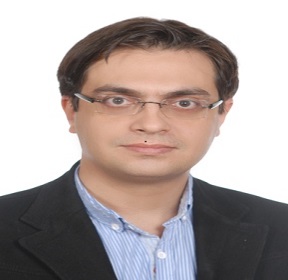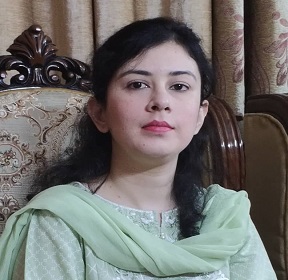Keynote Forum
Prof Mohammad Soleimani
Tehran University of Medical Sciences IranTitle: The Use of in Vivo Confocal Microscopy to Track Treatment Success in Fungal Keratitis and to Differentiate between Fusarium and Aspergillus keratitis
Abstract:
Purpose: To evaluate the usefulness of serial in vivo confocal microscopy (IVCM) examinations to measure hyphal density for monitoring the treatment success among patients with fungal keratitis, and to compare the hyphal diameter as well as branching angle as a way of differentiation between Aspergillus and Fusarium species observed in IVCM.
Study design: Prospective nonrandomized study.
Patients and methods: The study was conducted from February 2015 to September 2016. Hyphal diameter, density and branching angle measurements were performed using IVCM at admission and on a weekly basis for at least 2 weeks after the start of treatment.
Results: During the period of study, 65 patients with culture-confirmed fungal keratitis were recruited. Of them, 40 were culture-positive for Fusarium spp. and 25 patients for Aspergillus spp. Before the start of treatment, the mean branching angle did not differ between the two species and the mean hyphal diameter was statistically higher for Aspergillus spp. (p = 0.029). Two weeks after the start of treatment, the mean hyphal diameter was statistically lower (p < 0.001) in the treatment failure group. Also the hyphal density significantly decreased with successful treatment (p < 0.05).
Conclusion: Decreasing hyphal density in serial IVCMs might be used as an indicator to predict the successful response of fungal ulcers to treatment. Branching angle is not different between Aspergillus and Fusarium keratitis. The mean hyphal diameter is significantly lower in the treatment failure group
Biography:
Mohammad Soleimani MD, FICO is an associate professor in Farabi Eye Hospital,Tehran University of Medical Sciences. He received his anterior segment fellowship in 2012; he is especially working on ocular trauma, ocular surface and keratitis.
Dr Sehrish Akbar
Guangxi University, Nanning, China ChinaTitle: De-Novo Genome Assembly of Fusarium Species (F. Proliferatum YN-41 and F. Sacchari CNO-1) and Genome Wide Analysis to Identify Novel Secondary Metabolites
Abstract:
Pokkah boeng disease (PBD) is a major constraint to sugarcane production globally and is re-emerging as predominant foliar disease in China. PBD is an airborne disease of sugarcane, caused by Fusarium fujikuroi species complex (FFSC). In this study, we present high quality genome sequences, which is the first report of full genome for F. sacchari CNO-1. We performed whole-genome sequencing of Fs. CNO-1 and Fp. YN41 by utilizing a combination of second and third generation sequencing technology. De-novo assembly processes resulted in thirteen pseudo-chromosomes including twelve chromosomes and one mitochondrial genome for Fs. CNO-1 and Fp. YN-41.
We estimated that Fs. CNO-1 diverged ~6.16 million years ago (mya), approximately ~4.17 mya earlier than its closely related Fp. YN41 species. Further, we performed combined transcriptome, proteome, and metabolome analysis to identify the potential secondary metabolite biosynthetic gene clusters. We found that despite close association of Fs. CNO-1 and Fp. YN-41 genomic organization, both markedly differ with respect to presence and absence of secondary metabolites gene clusters in their genomes. HPLC-FTMS analysis revealed that fumonisin (FUM), fujikurins (FFUJ) and fusarinine (FSC) secondary metabolites which are encoded by Polyketide synthase gene (PKS) 11, PKS 19 and Non-ribosomal peptide synthetase gene (NRPS) 17 gene clusters, are absent in Fs. CNO-1. While PKS-8, NRPS-25 and DTC2-GA which encode gibberellins, are not found in Fp. YN41. Genome wide comparative analysis revealed higher number of genes encoding transcription factors, transporters, amino acid permeases, Carbohydrate-Active enZYmes (CAZymes), and polysaccharide lyase (PL) in Fp. YN41. Two unique PL families (PL20 and PL22) have been identified in Fp. YN41. Thus, through combined comparative genomics and genome wide analysis, we discovered novel genes and gene clusters that contribute to the host adaptability and pathogenicity of Fp. YN-41 and Fs. CNO-1, as sugarcane pathogen.
Biography:
I am Sehrish Akbar from Pakistan. Currently, I am doing my Post-Doctorate from State Key Laboratory for Conservation and Utilization of Agro bioresources, Guangxi University, China with Professor Mu-Qing Zhang. Major focus of my research is on sugarcane diseases (viral and fungal) and their resistant strategies (through RNAi, CRISPR). I did my PhD from National University of Science and Technology (NUST), Pakistan. During my PhD studies, I targeted one of devastating viral pathogen of sugarcane crop (Sugarcane mosaic virus) using amiNA and RNAi pathways. I have one-year research experience in CSIRO, Australia. Due to my previous academic record and hands-on-experience on various molecular techniques, I got selected for post of Research Associate in USDA-ICARDA project. Our team focused on development of resistant against Begomovirus through the modification of beta-satellite containing cytochrome c and RNAi knockouts.
Speakers
Josh Smith
CEO & Chief Scientist, Premium CBD Labs, LLC USATitle: Managing Fungal and Bacterial Risks
Abstract:
In the last two years there have been several high-profile illnesses in cannabis users, notably the e-cigarette, or vaping, product-use associated lung injury (EVALI), and heavy metal poisoning in California and Michigan. While these are undeniably deserving of attention, they have led to a focus on chemical contaminants and causes of illness, rather than microbial ones. With an estimated combined market of over $10B in retail sales this year, it’s not a matter of if, but when will the cannabis industry have its first major microbial or food-borne outbreak and product recall. This can be mitigated by implementing proper quality control measures, but what does that mean? Presented within is a general overview of quality control in 2 aspects of the cannabis industry particularly focusing on bacterial and fungal contamination and steps to mitigate it.
Learning Objectives:
1. Introduce the audience to a general overview of bacterial and fungal contamination
2. Identify areas in the growing and manufacturing industries to monitor for bacterial and fungal contamination
3. Present general steps forward to monitor and mitigate contamination.
Biography:
Josh Smith has spent the last decade researching alternative anti-microbial therapies in the pharmaceutical industry. In particular, he has spent most of his career developing molecular diagnostic methods and genetically modifying E. coli to prevent or kill off infections. Most recently, he worked on developing treatments for catheterized patients to guard against UTIs as well as clearing wound and skin graft sites prior to treatment. This work led to developing a patent pending new diagnostic test for identifying bacterial infections within 4 hours of receipt by the lab. His graduate degree is in clinical microbiology but, during the course of his education, he spent a large amount of time in microbial genetics, biochemistry, x-ray crystallography, and protein kinetics, particularly with the hemolysin hpmA of P. mirabilis. In 2018, Josh was approached to found Premium CBD Labs, a hemp testing laboratory located in Madison, WI. His focus is bringing the standards and ethical accountability of clinical labs to the cannabis testing industry.
Mohammad Qadir
President & Chief Scientific Officer, Fusion Genomics CanadaTitle: One Test PathoGenome: A Target Hybridization-Based Next-Generation Sequencing Assay to Tackle Undiagnosed Infections
Abstract:
Every year, approximately 800,000 critically ill patients are hospitals in the USA with undiagnosed infections. The only option is to treat these patients with broad-spectrum antimicrobial therapy and hope for the best outcome. The inability to obtain specific actionable information in a clinically relevant time-frame, combined with ineffective treatment, contributes to increased disease burden, mortality, hospitalizations, and drug resistance. The consequence is direct hospitalization costs of more than $27 billion, with another $26 billion lost due to antimicrobial resistance. What is urgently needed is precise and comprehensive targeted pathogen identification, including the capacity to detect drug-resistant mutations, for routine diagnosis to support effective treatment and control measures.
Fusion Genomics Corp.’s mission is to address this need and enable precision medicine for infectious diseases by developing a pan-pathogen test - the ONETest™ PathoGenome - that identifies all human pathogens (~1,400) and provides the genomic information necessary to guide treatment, including drug resistance and human genetic susceptibility markers in a timely fashion. The assay uses next-generation DNA sequencing (NGS) along with Fusion’s novel DNA hybridization technology, QuantumProbes, to enrich bacterial/viral/fungal genomes prior to sequencing. The assay will be functionally equivalent, yet clinically superior, to whole metagenome sequencing, but at 1/10th the cost, 1/3rd the time, and several times the sensitivity.
Learning Objectives:
1. learn how NGS will impact undiagnosed infections
2. learn about the advantages of using targeted sequencing versus whole metagenome sequencing
Biography:
Dr Qadir's training is in genetics and molecular biology. Dr Qadir has over 17 years of research experience. The last ten were at the British Columbia Cancer Agency where he worked with world-renowned experts in genomics and drug development. Dr Qadir is the co-inventor of the CHILDSeq-Sarcoma assay and CHILDDecode (part of FUSIONCloud™). Dr Qadir oversees all the scientific aspects of research and development efforts at FUSION GENOMICS and also serves as the interface for all collaborators.




